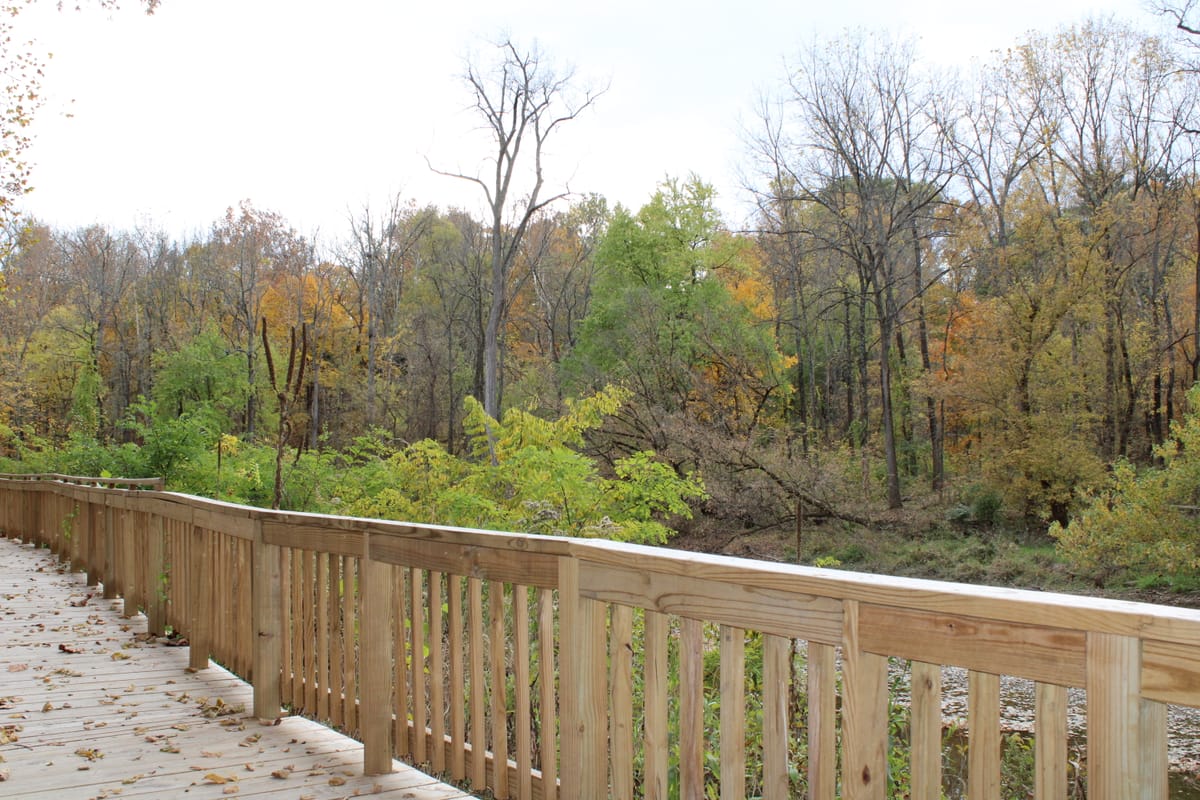Oxford is hitting peak fall foliage colors this week. Weather patterns and climate change impact when the brightest colors can be seen, and for how long.
Fall foliage in Southwest Ohio is anticipated to peak as usual this season, with trees nearing vibrancy. The region typically experiences peak fall colors during the third or fourth week of October.
David Parrott, a fall forester with the Ohio Department of Natural Resources, said drought earlier this season caused stress on some trees, causing some premature color change. However, subsequent rainfall from the remnants of Hurricane Helene helped the timing return to normal.
“Despite what looked like weather that was not conducive for good fall colors, [the season] has actually turned out to be a pretty good year, really good in some areas of the state,” Parrott said.
The main driver of fall colors is daylight. As days shorten, it signals to the trees to stop producing chlorophyll, the chemical that keeps the leaves' pigment green. Sunny days with cool evenings also trigger another response in the leaves, causing them to start producing anthocyanins that give them their purple and red appearance.
Drought can cause trees to stress and start changing color sooner, while excessive rain can cause trees to stay green longer. When freezing starts to occur, the leaves start falling off.
“If you asked me a month ago, I would not have been optimistic of how this fall color season would turn out,” Parrott said. “But I’ve been pleasantly surprised by the fact that we just got that little shot of rain from the hurricane … and because of those rains, that kind of helped those leaves hang on.”
Climate change has contributed to warmer fall temperatures in recent years, affecting the vibrancy of the leaves. According to the nonprofit Climate Central, fall temperatures have warmed an average of 2.5 degrees Fahrenheit across the United States since 1970.
According to the National Park Service (NPS), fall foliage can be impacted by weather events throughout the year. Warmer fall days could also “delay the temperature cues trees use to start the dormancy process,” the NPS reports, and climate change could lead to later, shorter and less vibrant fall foliage.
ODNR maintains a peak fall foliage map of the state parks and provides regular updates on the leaf colors on its website at www.ohiodnr.gov. As of Oct. 23, Hueston Woods State Park was listed as at its peak, meaning up to 85% of trees are showing fall colors.
Once the leaves reach and pass their peak, property owners move into the cleanup phase. Oxford has a curbside leaf pickup program allowing residents to rake leaves off their lawns and into the street gutter, where they are vacuumed up by city services. While the leaf drop-off timing doesn’t impact the schedule, Public Services Director Michael Dreisbach said when leaves fall all at once, followed by freezing weather, it can create inefficiencies in the process.
“If they all come down at once and we have freezing temperatures, they’re much more difficult to get through the vacuum to get collected,” Dreisbach said. “We’re much more efficient when we have nice dry weather.”
The leaf collection program will continue through the fall season, ending in December.
Have a fall photo you want to share? Submit it here!





